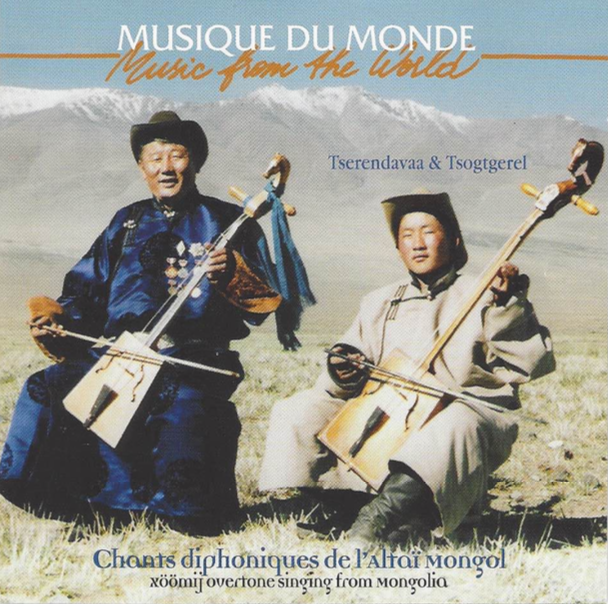Dashdorjiin Tserendavaa
Born in 1954 in Chandman, province of Xovd, Tserendavaa has always lived in this region. He is a nomadic shepherd and a xöömij singer. Chandman has long been called the “cradle of xöömij” as it is where some of the genre’s best singers were born. It is from this place that overtone singing has developed throughout the rest of the country before conquering the world, as Gengis Khan did. While Chandman is indeed the cradle of overtone singing, it is rather the cradle of its renewal than that of its birth.
Tserendavaa trained in a pastoral framework, imitating other singers. His teachers were Olmiibat, Maxanchuluun, Margat, Sundui and Tsedee. Along with several singers from the West of the country, Tserendavaa has been one of the main actors of the development of throat singing in Mongolia over the last thirty years.
He performs seven types of xöömij, which he has gradually passed on to Tsogtgerel: uruuliin xöömij (xöömij with flapping lips, tagnai xöömij (trille, palatal xöömij), bagalzuuriin xöömij (throat xöömij), xamriin xöömij (nasalised xöömij), tseejni xondiin xöömij (chest xöömij), xargia xöömij (deep xöömij), as well as xosmoljin xöömij (combined xöömij) , which is the name he has given to his personal style.
Tserendavaa usually accompanies himself on the two-stringed tovshuur lute to perform magtaal, and on the ekel or moriin xuur fiddles to play the byelgee dance melodies and sing the domog legends.
Like many shepherds, he also knows the urtiin duu long songs, which are usually sung at traditional ceremonies.
With a view to develop the art of xöömij, Tserendavaa sings the melodies of the long songs in his own xosmoljinstyle. This style simultaneously combines singing the lyrics and the harmonic melody. He and his son are amongst the rare overtone singers that have managed this up to now.
Tserendavaagiin Tsogtgerel
It is in the same shepherds’ life environment in the Mongolian Altai that Tsogtgerel, born in 1990, has been taught by his father Tserendavaa, who himself had assimilated the technique of his forebears. Tsogtgerel started is training in overtone singing at the age of 13. A singer trains by listening and imitating, and when it is deemed that his technique is good, he can transform it in order to make it his own. Watching over the herds or in his yurt camp when wandering with his family, moving 5 or 6 times a year between the Jargalant Altay Mount and Lake Xar Nuur in the Chadman plains, Tsogtgerel soon mastered his father’s overtone techniques. At the age of 16, he was acknowledged as a virtuoso by the community of overtone singers in his region. His family sent him to the Art and Culture University in Ulaanbaatar to study xöömij with another master, Baatariin Odsuren. Tserendavaa was hoping that his son would go further than his teaching and enrich his practice —which is a proof of humility in an environment that has now become extremely competitive.
Tsogtgerel also plays the moriin xuur horse-head fiddle, which he started to learn with his father in the family yurt. He then studied with Tuvshin, one of the last teachers of this instrument, who has retained a style of playing typical of the West of the country. Tsogtgerel still studies it now, at university. He has performed in many concerts in Mongolia, with his father or with friends. In 2006, he played outside of his country for the first time on a tour organised in France and Portugal. We have kept a trace of this European trip on the DVD section.
